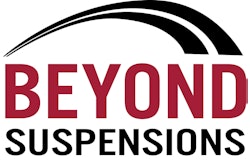Taking Down Management’s Roadblocks to Sales
Every distributor would agree that an outside salesperson’s job is to sell. It’s their frontline customer interaction and pavement pounding for new business that’s crucial to keeping the books in the black.
But more and more distributorship owners and managers are not letting their outside sales force do what it’s meant to do. The investment in proper training and tools isn’t there. The support, communication and top-down business strategy aren’t there. And, increasingly, salespeople are asked to perform tasks far removed from actually selling.
These roadblocks to the professional salesperson sell both the employee and your bottom line short.
SALES REQUIRES SELLING
An outside salesperson can have all of the natural talent in the world, but still will not find success if he or she is not allowed to ply his trade.
It’s a sign of the times and a consequence of the down market that has distributorships, like all businesses, scaling back headcount through layoffs or not replacing employees who leave the company. The employees who remain are asked to do more and more.
While in some scenarios this consolidation of responsibilities and full utilization of employee time can lead to greater efficiencies and reduced expenses, it does not always have a positive outcome.
For instance, some distributors have come to the conclusion that since an outside salesperson will be visiting customers as a normal part of his daily job anyway, he also can fulfill the role of delivery person. Or more.
“Everyone is so cost conscious now that some companies have lost sight of what sales is and they have their salespeople leaving in the morning with their vehicles filled to the brim with product for delivery,” says Chuck Marrale, president of One On One Sales Development, Inc. “And it isn’t just, ‘hey, as long as you’ll be at XYZ, can you drop this off?’ The salesperson actually will be pulling orders, loading the vehicle and making deliveries.”
While asking a salesperson to double up on duties may save costs, it’s at the expense of revenue.
“I’ve ridden with them. They’ll pull into a very good customer and drop off 20 boxes of brakes and in turn pick up a whole bin full of cores,” Marrale says. “And then they have to shove off because they have another 15 stops that are product deliveries. If you do that, even three days a week, you leave no time for sales.”
Also a frequent casualty of cost cutting is training. This also can be detrimental to sales.
But while training that requires travel or enrollment fees may be put off until a stronger financial year, still do the things that positively impact performance without the expense.
Particularly when it comes to newer employees who can most benefit from mentoring and peer training. Just be careful with whom you pair the novice outside salesperson.
“One of the worst things that can sometimes happen is the sales manager says, ‘hey, we’re happy to have you, why don’t you ride with old Joe for a couple of days, and then we’ll give you your route, your customers,” cautions Chuck Udell, senior partner of Essential Action Design Group. “Well, guess whose habits they pick up? Old Joe’s. And if the manager is careless, old Joe may have some bad habits.”
The sales manager has to be sure to let the right people do the training, and in a lot of cases, that should mean doing it themselves.
Udell says both novice and veteran outside salespersons can be aided by the effective coaching of a good sales manager.
A sample plan is to identify several key accounts and define a challenge or two that is unique to each one. Create strategies on how to overcome these challenges, make the appointments and hit the road.
Udell says the sales manager should work with the salesperson to pinpoint the challenges as specifically as possible, and that a full debriefing of what went right and what went wrong should be done after each call.
“You’re both helping the customer and developing the salesperson at the same time,” says Udell.
Bill Gordon, national director of Aftermarket and director of Global Marketing for Bergstrom, Inc., adds, “Be an engaged manager, travel with your team, get to know some of the key customers. Ask the questions of the customers. Of course sales are the ultimate factor in being a successful salesperson, but there is a different potential in each territory. You cannot always judge by sales figures alone. I like to listen to our sales professionals while they talk to customers. You get a real feel for the relationships and if they are taking care of business. At dealer events, training sessions and trade shows you get the opportunity to interact with the sales team and customers and observe the dynamics of these relationships.”
In addition to investments in developing the person, equipping that person with the right tools and technologies is also critical. Software programs dedicated to helping sales professionals, such as Customer Relationship Management (CRM) or Contact Management Software (CMS) programs, can complement efforts and empower employees.
There are a variety of CRM and CMS programs available, all with varying degrees of sophistication and price tags, so find one that both meets the needs of your sales department and is not too technologically advanced that your sales team will not be comfortable using it.
“When I started my career in sales there were no computers used. PCs and laptops did not exist,” says Gordon. “You lived and died by taking good notes and documenting things in an organized fashion. The advent of computers and laptops were an absolute blessing to sales professionals. I adopted contact management software early on. Our sales team uses a software package that allows you to keep all pertinent information in one place. It allows you to set reminders and automate sales reporting and, to some extent, forecasting. You can do a mass mailing or mail merge, fax blasts and other marketing functions.”
READY THE RIFLES
Perhaps the most important thing a company can do to help its outside sales force succeed is to communicate with them. While many companies don’t do a good job of defining and expressing goals and expectations, the problem is compounded with the outside sales team since they usually, by definition, spend less time at headquarters and around management. This means less opportunity for them to observe or learn of new initiatives or be plugged into the company’s general performance.
“For us, communication with our employees is No. 1,” says Jerry Weis, president of Ott’s Friction Supply, Inc. “I don’t think there’s anybody who works harder or spends more time communicating with their employees than we do. We have three meetings a week with our employees, one specifically with sales, and we take the time to find out everything that is going on with an individual’s route and their customers, and what’s happening with their competitors out in the marketplace.”
The open-communication environment also leads to more harmonious interaction between departments as employees are more aware of each other’s challenges and have a better understanding of how each other’s roles play into the company’s success.
It is potent and cost-effective team building, leading to greater camaraderie and understanding between employees and departments, ultimately improving the ability to best serve the customer.
Perhaps nowhere is this more evident than with the outside salesperson who often relies on internal staff – particularly counter salespersons. Orders are called into the parts desk from salespeople out on the road or they need to know the inventory level of a particular item. Since the employees working the counter usually are serving customers via the telephone or in-person all day long, the call from the outside salesperson may be considered a nuisance.
“To the counter person, he [the outside salesperson] becomes a bother,” Marrale says. “The counter person perceives the outside salesperson as having it easy; he just goes out, drives around and talks to people.”
Creating the team atmosphere can eliminate this dissension. It also can help create and execute a targeted sales effort by getting people to work together.
Marrale says get started by identifying three or four accounts and then taking a team approach on how best to serve those customers and grow business. Tie-in the appropriate sales, counter, delivery and management personnel, and get everybody on the same page – here are the goals and objectives, and here is how we’re going to achieve those things. “We’re trying to do more of a rifle effect, trying to be more professional and have a plan,” he says.
Communicating and sharing sales metrics and company performance data can help the outside sales force identify opportunities and defend weaknesses. In some cases, simply knowing the impact their sales performance has on the company’s overall financial health can go a long way.
“A lot of the people we talk to keep very good metrics, but they don’t share them,” says Udell. “What amazes me is the salesperson will know what they sold for each account, but they won’t know their gross profit. Management doesn’t feel they need to know that. I feel not only do they need to know the gross profit, but they need to know what has been the total cost of that sales call.”
This can help eliminate unrealistic perceptions that may be more common than you’d think.
“If you ask a salesperson how much of every dollar they sell does management or the owners get to keep, the answer will be incredibly high,” says Udell. “I will venture to tell you it will be from 20 to 30 to 50 percent or more.
“So I believe a company should share all of the financials so that the salesperson and everyone knows exactly what’s going on and how they contribute to those dollars.”
Creating an environment that lets the outside sales team function at its highest potential will provide a return on investment. Cutting costs or keeping employees in silos during these challenging times just creates greater challenges.
“In a nutshell, it requires a management team that is willing to work outside the box to break the paradigm of the traditional parts salesperson,” says Marrale. “It takes a company that is willing to train its people, develop a career program and make position changes when necessary. We are so focused on cost savings that we overlook the fact that increased sales with good margins are what support increased cost.”







